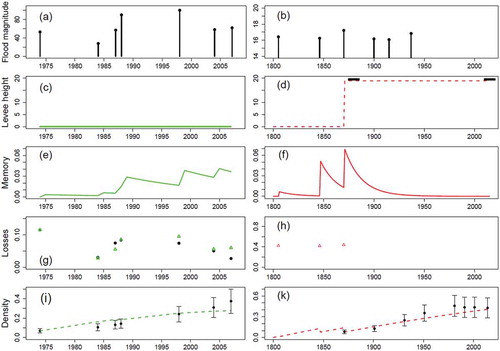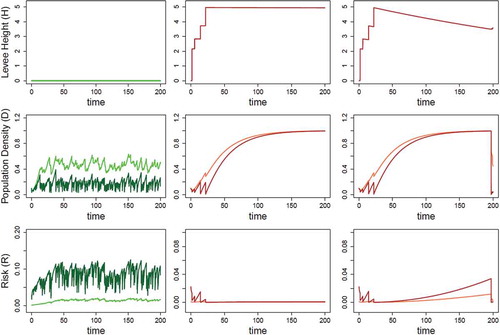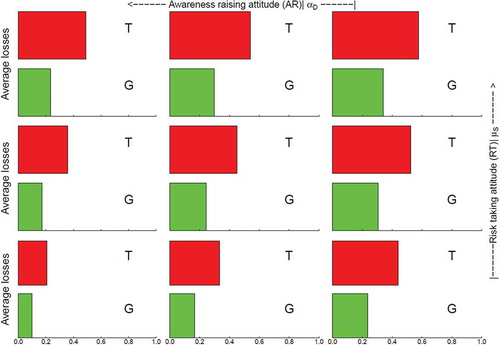Figures & data
Table 1. Time-varying variables of the dynamic model, data type and initial conditions used in the experiment for the two case studies: the People’s Republic of Bangladesh (BGD) and Rome, Italy.
Figure 1. Testing consistency between the outcomes of the socio-hydrological model and real-world data: People’s Republic of Bangladesh (example of green systems, left column) and Rome (example of technological systems, right column). Data are depicted in black.

Table 2. Time-invariant parameters of the dynamic model and values used in the experiment and reference for the two case studies: the People’s Republic of Bangladesh (BGD) and Rome.
Figure 2. Levee height (H), population density (D) and risk (R) dynamics of green (left) and technological (centre, right) systems according to high (αH = 0.25) and low (αH = 10) vulnerability conditions. The lighter the line colour, the lower the vulnerability. The centre and right pictures show risk dynamics in technological systems for two different values of levee decay rate kT, equal to 2 × 10–5 (centre) and 2 × 10–3 (right).

Figure 3. Each box contains two bars relating to average losses per event in green (G) and technological (T) systems. The risk-taking attitude increases for decreasing values of αD (i.e. 50, 10, 3), while the awareness-raising attitude increases for decreasing values of µS (i.e. 0.9, 0.22, 0.05).

Figure 4. Recovery time frequencies for green (G) and technological (T) systems. Each group of bars refers to high (H, green), medium (M, orange) and low (L, red) resilience. The fourth bar (NR, grey) indicates frequency of non-resilient responses, namely cases of no recovery. The risk-taking attitude increases for decreasing values of αD (i.e. 50, 10, 3), while the awareness-raising attitude increases for decreasing values of µS (i.e. 0.9, 0.22, 0.05).

